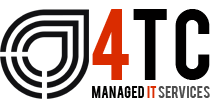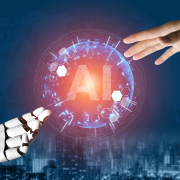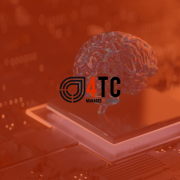ChatGPT And Generative AI: What To Do With All The Productivity?
A recent study by the National Bureau of Economic Research found that generative AI like ChatGPT can increase workforce productivity by an average of 14%. Some companies are already reporting productivity increases of up to 400% as a result of generative AI. And Mckinsey says that Generative AI could add up to $4.4 trillion worth of output annually.
As a C-level manager or board director, you want your company to take advantage of this potential. But how? Where are the biggest opportunities to do more with less, reduce costs, and boost profit?
In other words—What should you do with all that productivity?
Here’s how you can take advantage of the productivity benefits of AI now, without a multi-year project and tens of millions of dollars of investment:
Artificial Intelligence is Already Displacing Human Jobs
According to Goldman Sachs research, two of every three American occupations are exposed to some degree of automation by AI. Worldwide, 300 million jobs may be eligible for replacement in part or in whole by automation, potentially saving employers trillions of dollars.
That is not something that will come years down the road. A recent Challenger job report revealed that 3,900 jobs were eliminated by artificial intelligence in May, 2023. IBM froze hiring in the same period for 7,800 jobs it said could be replaced in AI in the coming years. And British Telecom announced that more than 10% of its team would be replaced by AI before 2030. (See “Using AI For Layoffs: 5 Benefits For Decision Making”)
While the productivity advantages differ for every organization, there are four key areas in most large companies where you can expect to see immediate disruption:
1. Customer operations:
McKinsey predicts that generative AI has the potential to increase productivity in customer care by as much as 45%. Much of that gain comes from the ability of AI to understand customer intent and sentiment, and give personnel—even new trainees—the information they need to resolve problems quickly. It can also offload low-level customer service demands to chatbots that are far more functional and human-like than ever before. That not only translates into better service provision, it also results in teams who feel less overwhelmed and therefore more cheerful and loyal. Some of the players leading the charge here are Qualtrics, Ultimate.ai, and Intercom.
2. Sales & Marketing:
Generative AI can analyze prospect behavior so that sales and marketing teams can optimize their strategic approach far more efficiently than ever before. But because of the specialized abilities of the technology, generative AI can also help create customized emails, social media posts, advertising artwork, product descriptions, landing pages, and so much more. Even small marketing and sales operations can now easily customize and personalize their efforts. Shortly after ChatGPT went live, Microsoft and Salesforce respectively introduced Viva Sales and Einstein GPT which put generative AI to work in sales. Phrasee, Persado, and Albert are just a few of the many solutions that are putting generative AI to work in digital marketing.
3. Software Development:
88% of software coders report increased productivity when using generative AI. The technology can execute repetitive tasks like inserting boilerplate code snippets. It can review human-generated code for bugs and security flaws. And it can create software documentation, eliminating the need for a human coder to spend time on what is considered a low-level task. GitHub Copilot, Tabnine, and Snyk are just a few of the many solutions that have emerged to increase productivity in software development
4. Research & Development:
A list of ways that generative AI can help in the wide-ranging field of R&D would consume the entirety of this article. From drug discovery in the pharmaceutical industry to information analysis in virtually any research field, to industrial design in manufacturing, generative AI is a true game changer.
Here’s how you can boost your productivity with generative AI
hat just scratches the surface of how AI is already changing the productivity game in business. But from a business management point of view, how can you align your organization to get moving?
1. Adopt and adapt—now:
Assume that your competitors are using generative AI right now. You need to get on board before they are so far ahead that you can’t catch up. (See The AI Threat: Winner Takes All.) Assume that your own team is experimenting with generative AI as well, whether it is part of your formal strategy or not. When human beings see a way to get their jobs done more easily, with less work—they take advantage of it. So you need to lean in and decide where, how, and when you want to implement this technology. Rapid adoption and adaptation is the name of the game.
2. Keep a human in the loop:
While it may be tempting to believe that you can simply offload work to generative AI, given the technology’s impressive performance, that would be a mistake. While integrating this technology, you should always retain “adult supervision” to make sure that the output meets the quality standards and brand image of your organization. Whether it is marketing content, product design, or software code, output needs to have a human review to ensure accuracy, avoid bias and other ethical issues, and spot other problems that only humans can understand today.
3. Engage with your team:
In response to the productivity boost afforded by generative AI, you may choose to let people go or make fewer new hires. However, you may also discover that your customers expect more from you than ever before, and that you need every available body to help increase output. Either way, you must take a hard look at your organizational chart and immediately engage with your team on this subject. Instead of having people worry about losing their jobs, help them to adapt. Some roles will be eliminated, others will expand, while still others will remain unaffected. Communicate with your team, let them know what is expected of them, support them with retraining and change management. And make sure that old and new teams alike are ready to embrace generative AI as a copilot.
4. Lead from the top
The CEO, the senior executive team, and the board of directors can not be on the trailing end of this change. The changes that generative AI is driving within your organization and industry will make the last decade of digital transformation look positively quaint. You need to lead your organization’s internal AI revolution. That does not mean that every senior executive needs to become an expert in AI themselves. However, they do need to champion its use and become very adept at implementing it throughout the organization.
If you care about how AI is determining the winners and losers in business, how you can leverage AI for the benefit of your organization, and how you can manage AI risk, I encourage you to stay tuned. I write (almost) exclusively about how senior executives, board members, and other business leaders can use AI effectively.
Source: ChatGPT And Generative AI: What To Do With All The Productivity? (forbes.com)










